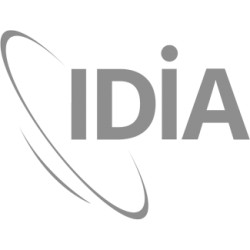We are excited to announce that we are once again joined by a new postdoctoral researcher, Dr. Sthabile Kolwa, who will be based at the University of Cape Town. Dr. Kolwa will be working on the MIGHTEE project on research into galaxy evolution.
Dr. Kolwa joins us from the European Southern Observatory (ESO), in Germany. Dr. Kolwa joined the ESO as Doctoral student whilst completing her Doctorate in Physics (Cum Laude) at Ludwig-Maximilian University of Munich. Her work at the ESO involved researching the evolution of distant radio galaxies using optical and sub-mm telescope data, and the development of software pipelines in Python for data analysis.
Dr. Kolwa joins the MeerKAT MIGHTEE large survey project, which is carrying out deep, wide-area research. Dr. Kolwa’s research will make use of MIGHTEE continuum observations and will showcase MIGHTEE’s potential in providing high quality and publishable data. Dr. Kolwa will use MIGHTEE continuum survey data to characterise the radio spectral energy distributions (SEDs) of radio galaxies spanning redshifts, z ~ 0 – 6.
“The plan is to use observations covering rest frequencies of 10 MHz – 1000 GHz to complete this. With as many observations covering the radio and mm/sub-mm regimes as the are able to acquire, the SED model template fitting can yield results which inform us of the underlying physical processes powering emission in radio galaxies.“
Dr. Sthabile Kolwa
At present Dr. Kolwa is engaged in a project that quantifies the kinematics and distribution of molecular gas within a sample of 7 radio galaxies at high redshifts of z ~ 2 – 5. This project has used ALMA neutral carbon observations to trace molecular hydrogen, a very important fuel source for star-formation in galaxies. This study will add to the body of work which uses neutral carbon surveys to trace molecular gas in distant radio galaxies which will be important in answering questions about how these types of galaxies about what happens to molecular gas in radio galaxies – it is lost through outflows that are driven by the mechanical power of radio jets or consumed rapidly in starburst episodes.
“Overall, the aim of my research is to know more about what powers radio emission in radio galaxies and how they evolve.“
Dr. Sthabile Kolwa
Dr. Kolwa’s research will be paramount in developing the literature needed to motivate future radio SED studies that will use observations from the Square Kilometre Array (SKA). The science goals will provide insight into which aspects of radio galaxy studies need to be investigated using deeper observations that the sensitivity of the SKA will be able to obtain.
We look forward to the contribution of Dr. Kolwa, and to the continued development and growth of our team. We wish Dr. Kolwa well during her tenure.
About the image: The photo is of the APEX telescope at ~5100m above sea-level in the Atacama Desert of Chile. The photo was supplied by Dr. Sthabile Kolwa and was taken during an ESO observing run where she took observations for other proposal PI’s at the APEX telescope facility at ~2400m in the town of San Pedro de Atacama.
